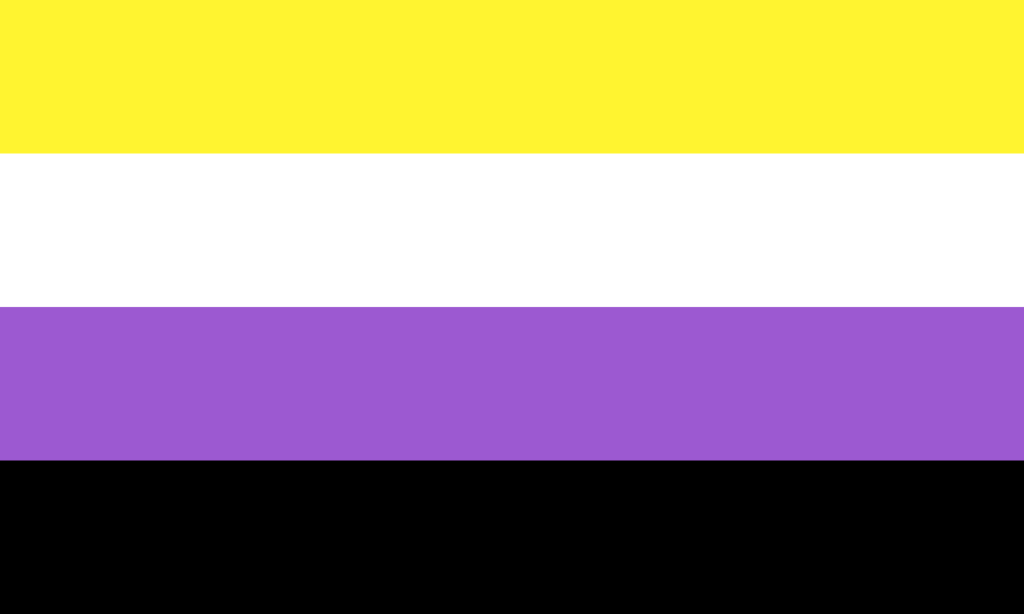July 14th is the eighth annual International Non-Binary people’s day and the week of July 12-July 18, 2020 is the first ever Non-Binary Awareness Week.
What does it mean to be Non-Binary?
The Non-Binary (Enby) title means different things to different people. The term describes someone who does not exclusively identify as either a woman nor a man; however, Enby people may identify as both woman and man, neither, in between or outside of the binary completely. Some Non-Binary people identify as trans, while others don’t. The philosophy behind non-binary identities can be a fun exploration of gender, which is largely performative. The way we perform masculinity and femininity is our own choice and this autonomy differs across the world.
For some, the Non-Binary title gives them comfort and space to be as queer as possible in their gender performance. In 1993, social theorist and now Yale professor Michael Warner defined queer as “resistance to regimes of the normal.” The “normal” in this context includes gender and sex role norms (heteronormativity), heterosexuality, and the notion of the existence of two set genders.
According to gender theorist Judith Butler, “…gender is culturally informed, but it’s also a domain of agency or freedom…it’s most important to resist the violence that is imposed by ideal gender norms, especially against those who are gender different, who are nonconforming in their gender presentation.”
The traditional approach to gender in America has been from an essentialist perspective. Essentialism originates from Plato’s theory of idealism that references a higher truth. It is a Eurocentric colonial practice to assume a right and a wrong, a Truth and a “not Truth,” or an inescapable binary. An essentialist perspective believes in the doctrine that two genders, along with their associated sexes, exist and that there is nothing to be argued against. This approach does not take into account environment, culture, individual experiences and physical or emotional needs.
Intersex people, or those who are born with a reproductive or sexual anatomy that don’t fit the typical definitions of female or male, are a direct challenge to the gender binary. Non-Binary people exist, and different variations of non-binary identities have always existed in indigenous nations.
It’s #NonbinaryAwarenessWeek so I’ll re share this article by me for Huffpost about how not only is non binary identities not new, but the suggestion of newness around them is seeped in racism. https://t.co/TwsWRDDXcJ pic.twitter.com/sQbj5BtFoL
— Travis (@travisalabanza) July 14, 2020
Non-Binary folx and allies recognize that gender is not binary, but it is a spectrum, similar to sexuality. Gender nonconforming people reject the belief that gender is meant to be binary, essential and universally understood.
So my friend is Non-Binary, how do I support them?
Majority of Enby people will use pronouns like they, them and theirs; however, other Non-Binary people will use pronouns like she, her, hers, he/him, ze/hir/hirs and the list goes on. The best way to respect someone’s gender identity is to directly ask for their pronouns upon meeting.
TAIMI, the world’s first LGBTQI+ friendly social network and dating app, shared 7 ways to be an ally to Non-Binary people on Medium. These include, but are not limited to:
-
Introduce yourself with your name and pronouns, and ask for everyone else to share their name and pronouns.
-
Avoid using binary language, instead of “ladies and gentlemen” use everyone, guests, friends, etc.
-
Don’t use Mr./Mrs./Ms. In cases where titles are absolutely necessary opt for alternatives such as Mx
-
Avoid using father, sister, boyfriend, etc. instead use words that define the relationship not gender i.e. parents, sibling, partner, etc.
-
Indicate your pronouns on social media and email signature
-
Don’t use he/she unless you know for sure those are the pronouns the person is using, instead use the singular they.
Gender identity isn’t something anyone should be curious about, not afraid of. It can be playful, fun and queer. Asking, listening and learning are steps in the right direction.
